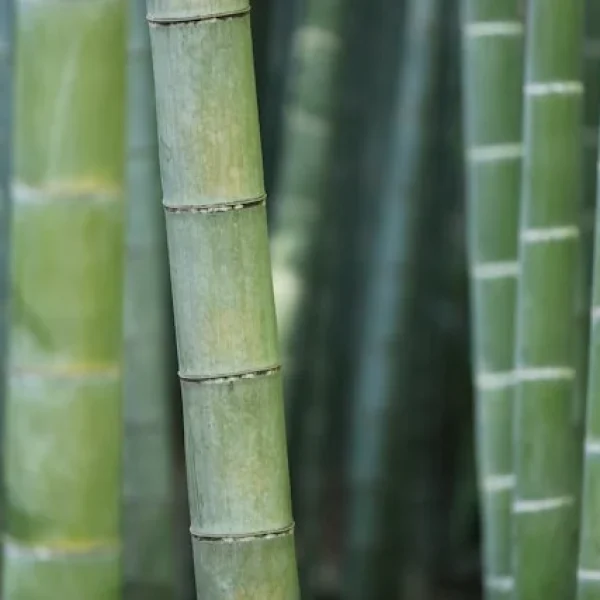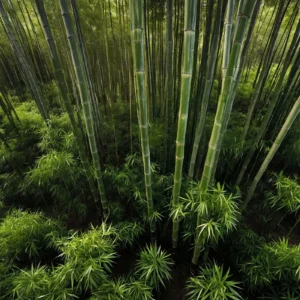Bamboo, a versatile and fast-growing grass, is more than just a plant. It’s a symbol of resilience, adaptability, and has woven itself into the cultural fabric of societies across the globe for millennia. From towering scaffolding in Southeast Asia to delicate flutes in Japan, bamboo’s presence is undeniable. Let’s embark on a journey to explore the cultural significance and traditional uses of bamboo around the world.
Asia: The Enduring Embrace of Bamboo
China: A Legacy of Sustainability
China boasts a rich history of bamboo utilization, evident in ancient texts dating back to the 4th millennium BCE. Here, bamboo is not just a material, it’s a way of life. [Bamboo as a valuable resource and its utilization in historical and modern-day China] Construction, furniture, tools, utensils, and even traditional medicine all rely on bamboo. The iconic scaffolding used in China’s historic building projects exemplifies bamboo’s strength and versatility.
Japan: Finding Harmony with Nature
In Japan, bamboo embodies the essence of wabi-sabi, the appreciation of imperfection and impermanence. Bamboo’s natural beauty and flexibility are celebrated in various art forms like ikebana (flower arrangement) and basket weaving. The soothing sounds of the shakuhachi flute, crafted from bamboo, resonate with Japanese culture. [From ancient times to modern day: exploring the many uses of bamboo in our daily lives]
India: A Deeply Rooted Tradition
India’s connection with bamboo stretches back to the Vedic age. [Socio -cultural and Management Significance of Bamboos in Indian heritage and tradition] It features prominently in ancient texts and is used for construction, utensils, musical instruments like the bansuri, and even religious ceremonies. Certain communities revere bamboo groves, attributing them with spiritual significance.
Beyond Asia: A Global Embrace
Africa: A Source of Strength and Sustenance
Africa has a long-standing tradition of using bamboo for construction, furniture, and tools. In some regions, bamboo shoots are a valuable food source. The intricate weaving techniques employed by African artisans create beautiful and functional baskets, mats, and other items.
South America: A Symbol of Unity and Diversity
In South America, bamboo plays a vital role in the lives of indigenous communities. It’s used for building houses, crafting weapons, and creating musical instruments like panpipes. The Yanomami people of the Amazon rainforest even use bamboo to construct elaborate communal structures.
Beyond Borders: A Unifying Material
Bamboo transcends cultural boundaries. Its rapid growth and eco-friendly nature make it a sustainable alternative to traditional materials. The global bamboo industry is flourishing, with applications ranging from clothing and flooring to bicycles and even high-rise buildings.
Cultural Significance: More Than Just Utility
Symbolism and Mythology
Bamboo features prominently in various cultures’ myths and legends. In China, it symbolizes longevity and resilience. Japanese folklore associates bamboo with strength and flexibility. Across Southeast Asia, bamboo shoots represent new beginnings and prosperity.
Religious and Spiritual Connections
Many cultures hold bamboo in high religious regard. In Hinduism, bamboo represents purity and is used in rituals. Certain Buddhist temples in Southeast Asia are constructed entirely from bamboo. In some indigenous communities, bamboo groves are considered sacred spaces.
Art and Music: A Canvas for Creativity
The natural beauty and versatility of bamboo make it a favorite material for artisans. Asian cultures have a rich tradition of bamboo art, from intricate basket weaving to delicate paintings on bamboo strips. The mellow tones of bamboo flutes resonate in music traditions across the globe.
The Future of Bamboo: Sustainable Solutions
As the world grapples with environmental challenges, bamboo emerges as a beacon of hope. Its rapid growth and ability to regenerate make it a highly sustainable resource. The bamboo industry is constantly innovating, with new applications being developed all the time.
Environmental Benefits
Bamboo forests play a crucial role in soil conservation and preventing erosion. They also act as carbon sinks, helping to mitigate climate change. The growing awareness of bamboo’s sustainability has led to a surge in its use for eco-friendly products.
Economic Opportunities
The bamboo industry presents a significant economic opportunity, particularly for developing nations. Bamboo cultivation can create jobs, generate income for rural communities, and promote sustainable development.
A Material for a Greener Future
Bamboo’s cultural significance, traditional uses, and sustainable properties make it a valuable resource for the future. By harnessing its potential, we can create a more harmonious relationship with the environment and build a more sustainable future.
Conclusion
Bamboo is more than just a plant; it’s a cultural touchstone woven into the fabric of societies worldwide. From the towering structures of China to the delicate melodies of Japanese flutes, bamboo’s presence transcends borders and speaks to the ingenuity and adaptability of humankind. As we navigate the challenges of the 21st century, bamboo emerges as a beacon of hope. Its rapid growth, versatility, and environmentally friendly nature make it a critical player in building a more sustainable future. By embracing bamboo’s cultural significance, traditional uses, and innovative potential, we can create a world where human ingenuity thrives in harmony with the environment. Let’s continue to learn from the wisdom of past generations and explore the boundless possibilities this remarkable plant offers. After all, the future of bamboo is not just about utility – it’s about fostering a deeper connection with nature and building a more resilient tomorrow.





